Yoga for Daily Life Class 4 Notes Physical Education Chapter 6 Free PDF
| Table of contents |

|
| Introduction to Yoga |

|
| Ahara, Vihara, Achara, Vichara and Nidra |

|
| Ashtanga Yoga- The Eight Limbs of Yoga |

|
| 1. Yama- Social Disciplines |

|
| 2. Niyama-Personal Disciplines |

|
Introduction to Yoga
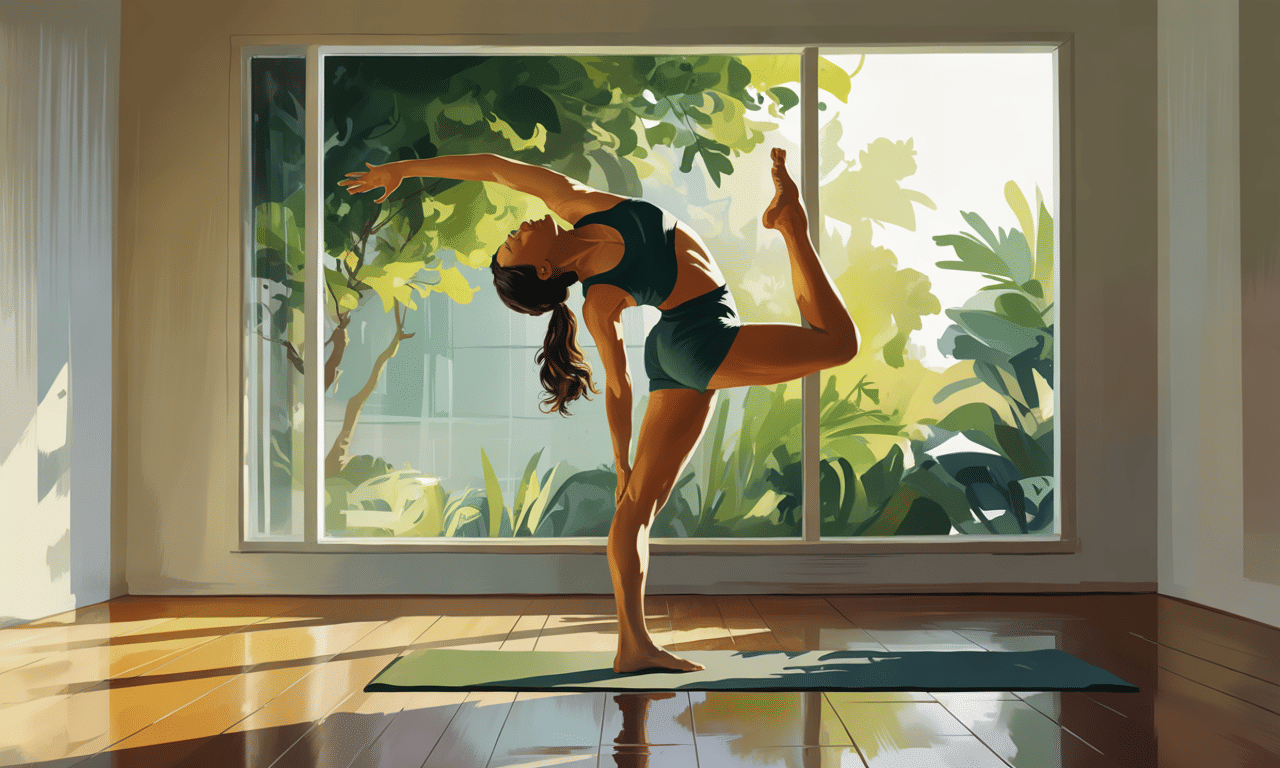 Yoga Pose
Yoga Pose
Yoga is a magical tool that helps us stay healthy, happy and peaceful.
- It is not just about bending our bodies into different shapes but also about creating a balanced life.
- Yoga helps us in many ways – physically, mentally, and emotionally.
Ahara, Vihara, Achara, Vichara and Nidra
We can make yoga a part of our daily life by focusing on five important aspects, which are: Ahara, Vihara, Achara, Vichara, Nidra 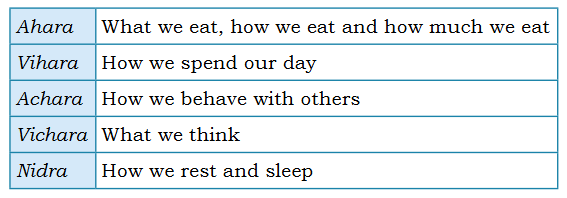 Let us understand more about each of these aspects.
Let us understand more about each of these aspects.
1. Ahara- Eating healthy
Eating healthy foods is very important for our well-being. Just like we care for our bodies with yoga, we need to care for them with good food.
 Eating Healthy Food
Eating Healthy Food
- Eat fresh and healthy food.
- Pray before eating. This helps us be thankful for our food.
- Chew your food well. This helps our body digest food better.
- Eat together with family. It’s fun and healthy.
- Avoid junk and packaged food. Choose fresh food over chips and chocolates.
- Eat with awareness. Avoid distractions like TV or gadgets when eating.
- Never waste food. Food is precious.
2. Vihara- Daily Routine
Yoga helps us develop a healthy daily routine that gives us energy. By following a good routine, we can stay active and happy all day long!
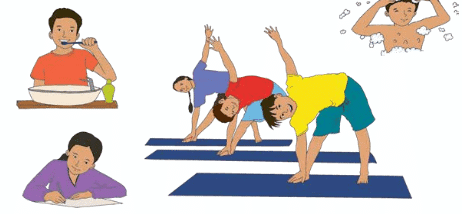 Daily Routine
Daily Routine
- Wake up early in the morning. Start your day fresh.
- Brush your teeth and take a bath every day. Cleanliness is part of yoga.
- Practice asanas and pranayama (breathing exercises). These help keep your body and mind healthy.
- Play games instead of spending time with gadgets. Physical activities make us stronger.
- Spend your free time in creative activities like drawing, singing, and storytelling. Creativity makes us happy!
- Help your family with small tasks. Yoga teaches us to care for others.
3. Achara- Behaviour
Yoga helps us grow as good people. When we practice kindness and respect, we feel happy from the inside.
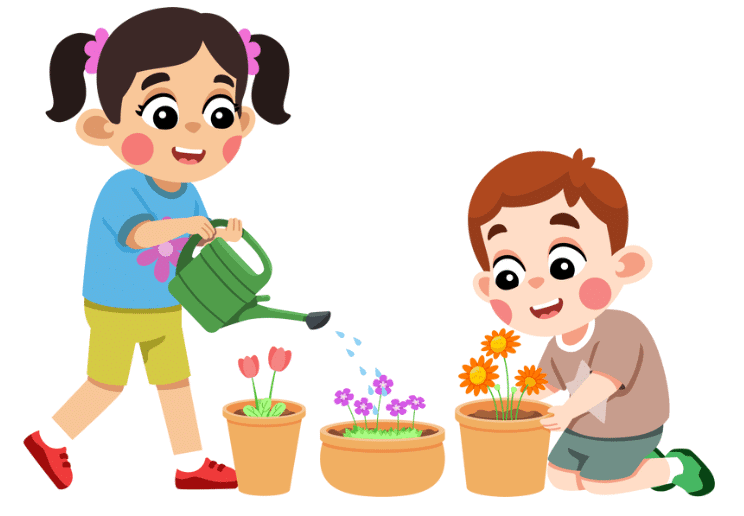 Good Behaviour
Good Behaviour
- Speak politely with respect. Being kind makes us loved by everyone.
- Help others. Yoga is all about being a good friend.
- Take care of plants and animals. They are living creatures like us.
- Share things with friends and family. Sharing makes us feel happy.
- Always say “thank you,” “sorry,” and “please.” These simple words show respect.
4. Vichara- Thoughts
Our thoughts shape who we are! By thinking positively, we make our lives happier and calmer.
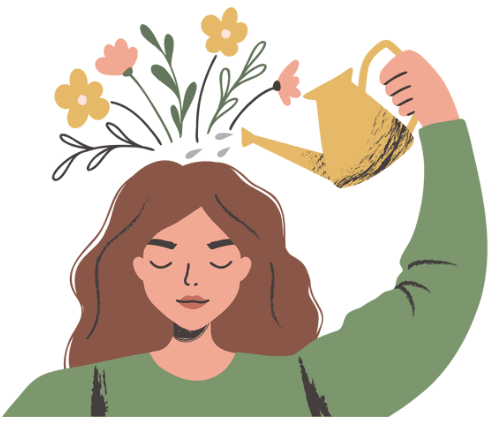 Positive Mind Set
Positive Mind Set
- Think positively about yourself and others. Positive thoughts make you feel good.
- Spend time with elders and family members. Their wisdom helps us grow.
- Read inspiring books regularly. Books open new worlds for us.
- Be in nature for a while. The fresh air and greenery calm our minds.
- Listen to soothing music. Music relaxes and heals our minds.
5. Nidra- Sleep
A sound sleep helps our body and mind rest and relax. When we sleep well, we wake up full of energy!
 Sound Sleep
Sound Sleep
- Sleep early and wake up early. A good night’s sleep helps you grow strong.
- Read a book or listen to a story before sleeping. It helps calm your mind.
- Pray before sleeping. It helps us feel thankful for the day.
- Sleep in comfortable clothes. Comfort is key for a good sleep.
- Avoid using gadgets at least an hour before bedtime. Gadgets can disturb your sleep.
Ashtanga Yoga- The Eight Limbs of Yoga
Yoga is a journey, and it’s made up of eight important steps, called Ashtanga Yoga. These eight limbs help us live a peaceful and balanced life.
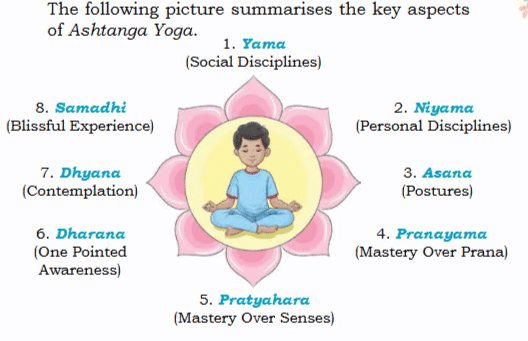 Ashtanga Yoga
Ashtanga Yoga
- Yama (Social Disciplines) – Be kind to everyone.
- Niyama (Personal Disciplines) – Take care of yourself.
- Asana (Postures) – Practice yoga poses to stay strong and healthy.
- Pranayama (Breathing Control) – Control your breath to calm your mind.
- Pratyahara (Withdrawal of Senses) – Focus your mind on what’s important.
- Dharana (Concentration) – Focus your mind on one thing at a time.
- Dhyana (Meditation) – Relax and meditate to find peace.
- Samadhi (Blissful Experience) – Achieve happiness and peace.
Let us learn about each limb in detail.
1. Yama- Social Disciplines
Yama teaches us how to be good friends, family members, and citizens. These five Yamas guide us to live peacefully with others.
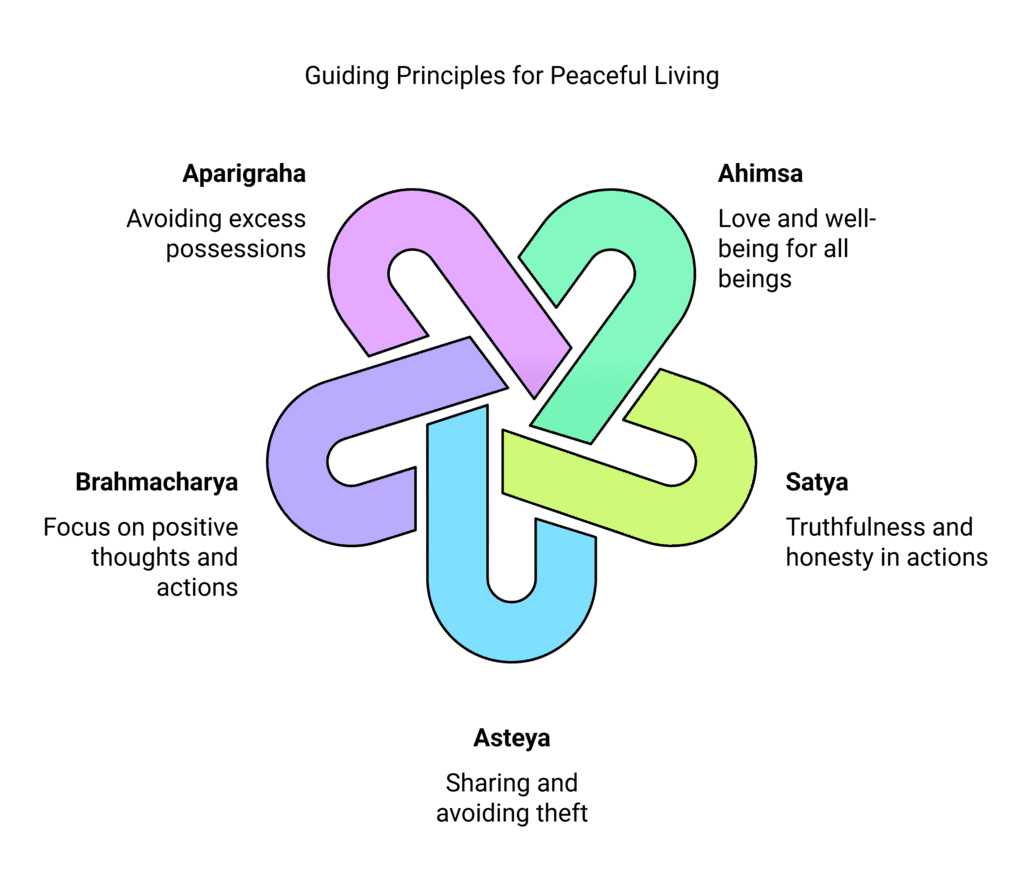 Yama
Yama
- Ahimsa – Love all living beings and pray for their well-being.
- Satya – Be truthful and honest in everything you do.
- Asteya – Share with others and don’t take what isn’t yours.
- Brahmacharya – Stay focused on positive thoughts and actions.
- Aparigraha – Avoid having more than what you need.
In this class, we shall understand what Satya is.
Satya (Truthfulness)
- Satya means always telling the truth.
- It is one of the most important practices in Yama.
Let’s learn more about being truthful through a story of The Woodcutter and the Axe!
The Woodcutter and the Axe
- Once upon a time, a woodcutter was working in a forest.
- While chopping wood near a river, his axe slipped from his hand and fell into the water.
 Woodcutter and Goddess
Woodcutter and Goddess
- The woodcutter was very sad because the axe was his only tool for earning a living.
- He prayed to the Goddess of the river for help.
- The Goddess appeared and dived into the river.
- She brought up a golden axe and asked, “Is this your axe?”
- The woodcutter replied, “No, that is not mine.”
- The Goddess then brought up a silver axe and asked again, “Is this your axe?”
- The woodcutter said, “No, that is not mine either.”
- Finally, the Goddess brought up the woodcutter’s old iron axe from the river.
- The woodcutter smiled and said, “Yes, this is my axe.”
- The Goddess was impressed by the woodcutter's honesty and gave him all three axes - the golden, silver, and his own iron axe.
Moral:
- Always tell the truth, no matter the situation.
- Honesty is always rewarded.
2. Niyama-Personal Disciplines
Niyama is the second limb of Ashtanga Yoga. Niyama teaches us to improve ourselves every day. These five practices help us grow in a positive way.
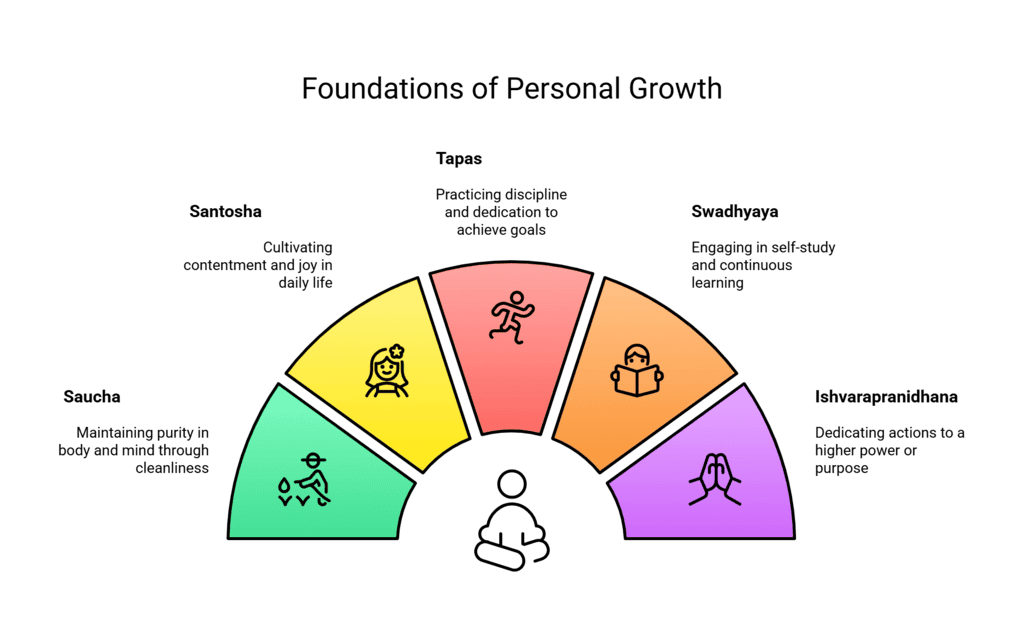 Niyama
Niyama
- Saucha – Stay clean and pure in body and mind.
- Santosha – Be content with what you have and enjoy it.
- Tapas – Be disciplined and dedicated to your goals.
- Swadhyaya – Read inspiring books and learn every day.
- Ishvarapranidhana – Dedicate your actions to God.
In this class we will focus on Santosha.
Santosha (Contentment)
- Santosha means contentment or satisfaction.
- It is about appreciating and valuing what we have instead of always wanting more.
Let’s understand the meaning of Santosha through the story of "In Search of Happiness."
Story: In Search of Happiness
- A woodcutter works by chopping wood and selling it.
- He sees a rich man enjoying life and thinks, “If I were rich, I would be happy.”
- The woodcutter meets a yogi who offers to grant him a wish.
- The woodcutter wishes to be rich, and the yogi makes him rich.
- The rich man wishes to be a king, and the yogi makes him a king.
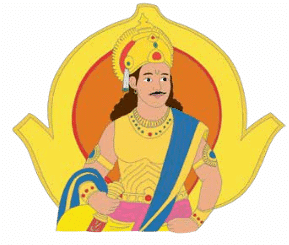
- The king, unhappy with the sun's heat, wishes to be the sun.
- The yogi makes him the sun, but the king then wishes to be a cloud because the clouds can block the sun.
- As a cloud, the king wishes to be a tree because trees are strong and can’t be moved.
- Finally, the king wishes to be the woodcutter again after realizing the woodcutter has the best life.
- The yogi teaches him: "Be content with what you have and appreciate your unique strengths."
Moral:
Be content with what you have. Always appreciate what you have instead of constantly wishing for more.
FAQs on Yoga for Daily Life Class 4 Notes Physical Education Chapter 6 Free PDF
| 1. What are the key yoga practices mentioned in the chapter for daily life? |  |
| 2. What important points should one keep in mind while doing yoga? |  |
| 3. What types of circle time activities can be conducted after yoga sessions? |  |
| 4. What values can children learn through practicing yoga? |  |
| 5. How can yoga be applied in real life beyond the classroom? |  |




















